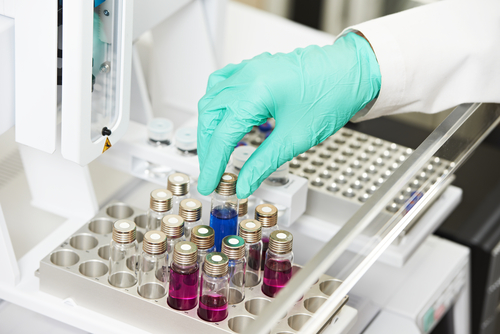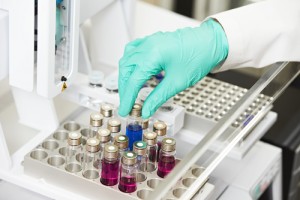Pacific Therapeutics May be Searching for Market Partner for its Novel IPF Drug Combination

 The clinical stage specialty pharmaceutical company Pacific Therapeutics announced that is looking for a commercialization partner for the sale of PTL-202, as a result of positive results of recent pre-clinical studies and an initial phase I clinical trial of its lead drug candidate for pulmonary fibrosis. PTL-202 is a combination of an FDA approved drug, an amino acid, and an extremely potent and important antioxidant. In addition, the company believes that the market for Idiopathic Pulmonary Fibrosis (IPF) therapies is growing.
The clinical stage specialty pharmaceutical company Pacific Therapeutics announced that is looking for a commercialization partner for the sale of PTL-202, as a result of positive results of recent pre-clinical studies and an initial phase I clinical trial of its lead drug candidate for pulmonary fibrosis. PTL-202 is a combination of an FDA approved drug, an amino acid, and an extremely potent and important antioxidant. In addition, the company believes that the market for Idiopathic Pulmonary Fibrosis (IPF) therapies is growing.
The company, which focuses on repurposing and reformulating existing FDA approved drugs for large markets, is currently planning further clinical studies of PTL-202, with the purpose of gaining PTL-202’s initial approval in Europe, as a result of the initial findings of the once a day formulation. In order to succeed, the company is engaged in fine-tuning the amount of active Ingredients in the final formulation of the drug combination in order to continue the regulatory filing process, potential dose ranging, and proof of principal clinical trial.
Pacific Therapeutics is also considering the finding a market partner for the drug combination. In the United States, the company believes that the IPF therapeutics market may grow nearly $500 million in 2015 and reach $696 million in 2017, a CAGR of 154%. In Europe, the IPF market was evaluated at $43 million in 2012, but is forecast to grow to $419 million in 2017 at a CAGR of 58%, according to RnR Market Research.
IPF’s emerging therapy value was recently revealed when InterMune Inc. was purchased by Roche Holdings Inc, in an $8.3 billion agreement. InterMune, Inc., a biotechnology company focused on the development of innovative therapies in pulmonology and orphan fibrotic diseases, has been developing a novel therapy called pirfenidone for the treatment of adults with mild to moderate IPF, a drug that was recently granted Breakthrough Therapy Designation from the U.S. Food and Drug Administration (FDA).
[adrotate group=”3″]
There are over 5,000,000 people living with IPF in the world, 218,000 of which in the United States. Despite the fact that only 85,000 of the sufferers are diagnosed, it is believed that more modern diagnostic methods may increase the diagnosed population by 40% to 146,000 by 2015 in the USA. The disease strikes mainly older people, between the ages of 50 and 70 years old.
The company has recently announced the positive results of the pre-clinical studies and an initial phase I clinical trial of PTL-202, which was tested in its separate constituents, during 5 experiments and in a recognized mouse model of pulmonary fibrosis, as reported previously by Pulmonary Fibrosis News. The study produced the data needed for the European Patent Office to award it a patent covering the proprietary technology, and it is now being validated in separate countries.
Although generally phase I clinical trials are meant to assess the safety and toxicity of a new drug in development, in this case, the study was performed on a combination of approved drugs, which means that the safety profile, as well as toxicity, were already known. Therefore, the trial evaluated not only the combination and interaction of the drugs, but also its synergistic effects and new side effects.
No additional side effects were reported, and side effects such as dizziness and nausea were consistent with the higher amounts of the Active Ingredients from the combination that were in the blood at peak concentrations. In addition, there are evidences of synergy and scientists were able to create smaller doses with the same amount of Active Ingredients, which may mean smaller and easier to swallow pills. The company believes that the positive results of the study may not only accelerate the regulatory approval process, but also improve the competitiveness and commercial potential of PTL-202.







